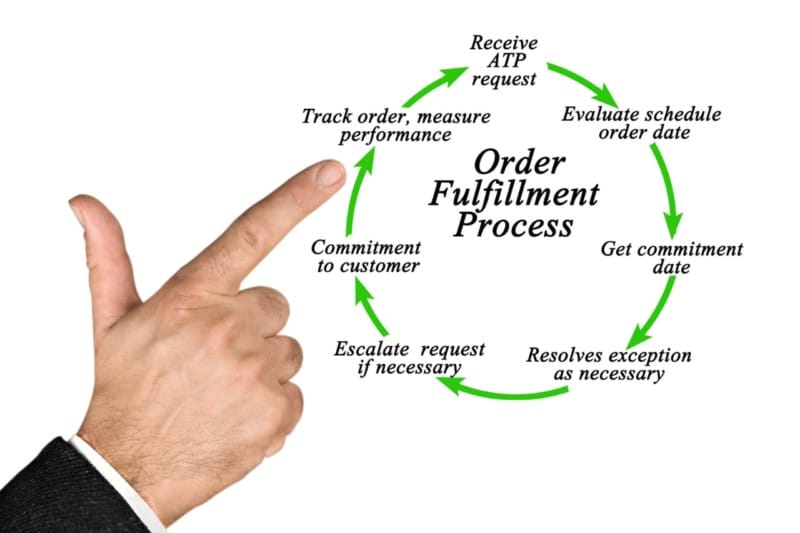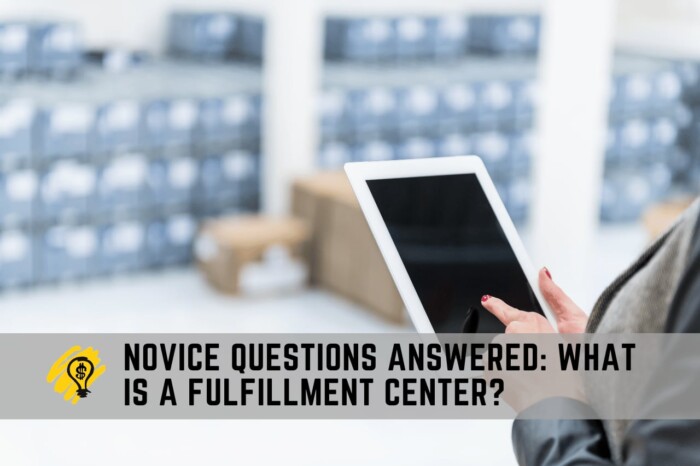As online shopping soars and brick-and-mortar stores decline, it’s becoming harder and harder for companies and businesses to keep up with shipping demands.
22% of shoppers will abandon their order if delivery takes a longer period of time. And many consumers will abandon you if a purchase is not delivered within two days of the promised delivery date.
What does this mean?
Well, it means that it’s imperative that your inventory keeps up with your demand. And the easiest way to do this is by keeping inventory in a fulfillment center (as opposed to in your store itself) and counting on them to fill and ship the orders.
But what is a fulfillment center? Read on to find out.
Table of contents
What is a Fulfillment Center?
So what is a fulfillment center? Basically, a fulfillment center is a warehouse that picks, packs, and ships orders to customers.
But there’s more to it than that.
It is a third party, which means that the vendor (the shop or business responsible for the product) has to figure out how they want the process to work. They can either receive the goods and review them before sending them to the fulfillment center or have them sent directly to the warehouse from the manufacturer.
If you’re receiving the product before forwarding it on, you must have a large space to receive it. You’ll also have to pay to ship it twice (once from the manufacturer to you and once from one the fulfillment center).
If you opt to have the product sent directly to the fulfillment center from the manufacturer, then you’ll either have to trust them to check and qualify the products on your behalf. Or you’ll have to spend time sending someone from your team out to the fulfillment center to check the products.
The fulfillment center becomes responsible for and absorbs the costs of ‘mispicks’ (wrong product selected to fill the order) and ‘misships’ (wrong item sent to the customer).
How Fulfillment Centers Can Make Shipping Faster and Returns Easier?
Fulfillment centers are just what they sound like: distribution centers where products are stored and prepared for shipment to customers. Most fulfillment centers do the initial prep work on a product. They package a product into shipping boxes and fill them with the necessary paperwork. Once the package is filled, the fulfillment center ships the box to the retailer.
Amazon has spent millions on fulfillment centers in recent years to speed up delivery times and reduce shipping costs. This strategy has paid off with shorter delivery times, fewer delays, and improved customer satisfaction.
Additionally, fulfillment centers can make both shipping faster and returns easier.
How?
For starters, major shipping companies like FedEx, UPS, and the Post Office negotiate contracts and prices with major fulfillment centers. This means that you can often offer free or discounted shipping to your customers (which they love).
And returns can be sent directly to the fulfillment center, preventing you from having to charge the customer for restocking the product.
Warehouses vs. Fulfillment Centers
When people talk about warehouses and fulfillment centers, many think they mean the same thing. But they are not. Warehouses and fulfillment centers aren’t necessarily the same thing, even if they share the same purpose: storing products for sale. They’re both physical locations in which products are stored. Both are places where inventory is kept, but there are differences.
Warehouses are places where products are stored until they’re shipped to retailers.
On the other side, fulfillment centers are facilities where products are packaged and shipped directly to customers.
The main difference between a warehouse and a fulfillment center is that a warehouse is used to store goods, and this center is used to ship them.
Now, it may (and often does) allow you to store products there – but they will require that you actually ship the product out in order to maintain your space.
You cannot use a fulfillment center’s warehouse strictly for storage purposes.

Pros of a Fulfillment Center
There are several pros of this type of center, from saving money to allowing you to pass off the logistics of shipping and fulfilling orders.
Focus on What You Do Best
When you outsource your product fulfillment to a fulfillment center, it frees you up to focus on everything else your business or store needs to worry about. Things like product sourcing, marketing, or strategic planning.
Plus, the more time you spend focusing on these things, the less time you’ll have to spend on things that directly impact your bottom line. For example, when working with a fulfillment center, you don’t need to worry about inventory management. And, when you’re not spending time on these things, you’ll be able to spend more time doing what you love, running your business, or growing your store.
If you handle fulfillment internally on your own, you will ultimately end up wasting the time of upper management solving problems and dealing with small glitches. A fulfillment center takes away that problem.
Lower Your Overhead Costs
When you handle your fulfillment in-house, you have to deal with things like warehouse rent, equipment, and indirect labor. This comes with fixed overhead costs. And as the volume of your orders increases or decreases, so will your overhead costs.
When you outsource your fulfillment, you can pay for it upfront and have an endless labor supply. You only pay for what you need. And when you don’t need it, you don’t pay for it.
But you can generally reduce your overhead costs if you outsource to a fulfillment center – unless they have minimums or charge a high monthly retainer.
Improved Speed and Dependability
Your product is going to have a certain shelf life. You need to design your fulfillment process to meet that shelf life. You need to plan for inventory, and not just how much inventory you have but when you should order more. The idea of inventory is to have enough inventory to fulfill current demand and to have enough in reserve to handle future demand. If you have a good product, customers will return to buy it.
Since things like sales, restocks, and returned orders tend to ebb and flow, it can make it hard to be cost-effective in managing an in-house fulfillment staff while having fast and consistent turnaround times.
You don’t have to deal with these problems when you outsource. The headache is passed on to the fulfillment center. Because this is the specialty of these centers, they can manage the ebbs and flows of an e-commerce business much more effectively. This means faster turnaround times and more predictable costs per order.
Improved Scalability
As your operation grows, warehouse space can become an issue. But as long as your fulfillment center has the capacity to stock your product, you shouldn’t have to worry about that. That will be the problem of the center. In such a way, you will get improved scalability.
Cons of a Fulfillment Center
There are also a couple of cons of fulfillment centers. You lose control over the product and the ability to customize shipping.
Loss of Control
Ultimately, you have to trust your fulfillment partner. You’re giving up control of the fulfillment process and handing it into their capable hands. And while this may be hard for some managers and owners to handle – it’s really for the best.
Lack of Customization
Often, e-commerce business owners want to add some sort of customization to the shipping process. This can include things like a branded shipping box, custom packaging, or even a personalized letter.
You may have to give up on some of this customization when you outsource to the center. But again, this can help lower your costs, and then you can pass those savings onto your customers – which they may like more than a personalized letter anyway.
Proceed to Checkout
Now that you know what a fulfillment center is and all the benefits it can provide, it’s time to catch up on how to be a successful entrepreneur.
Check out the entrepreneur section of our blog to learn more about how to grow your business, keep it successful, and lead the pack.





